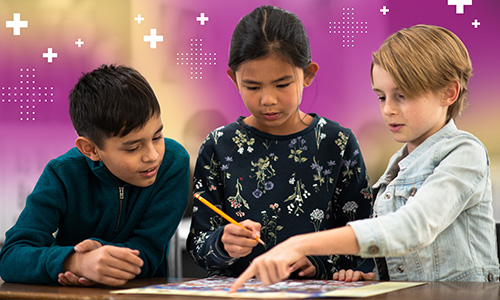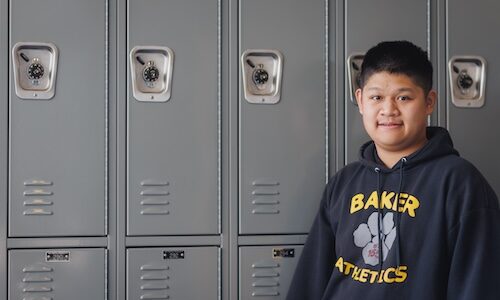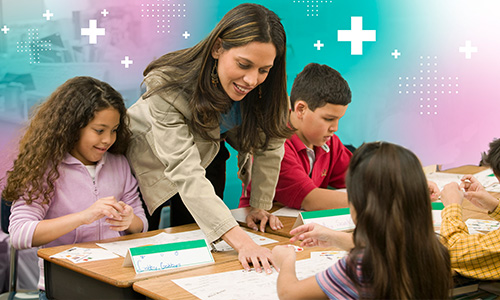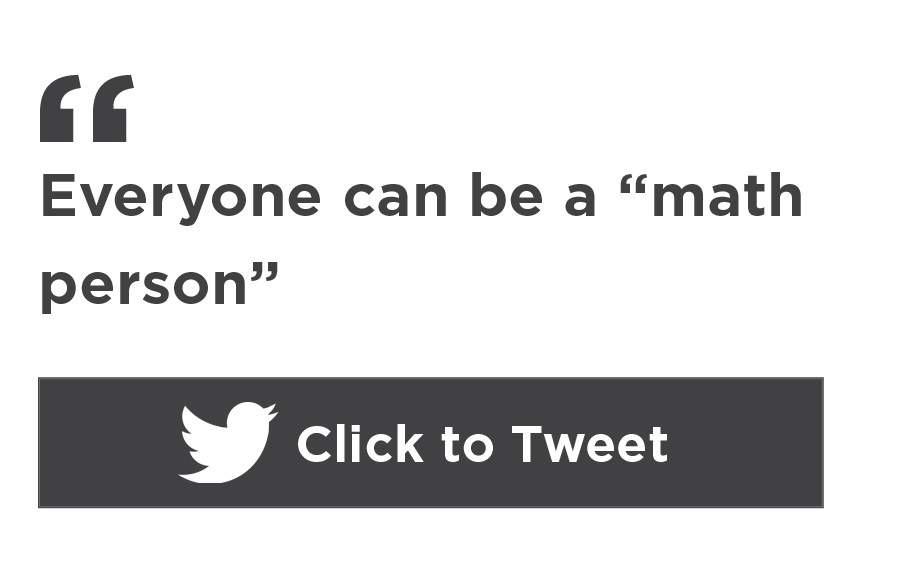
Although I have a degree in mathematics and taught middle school math, it took nearly a quarter of a century before I identified as a “math person.” I’m certain you can name a least five people who consider themselves to be “not a math person.” My certainty lies in the fact that our society has made “illiteracy in math acceptable the way illiteracy in reading is unacceptable,” as the late Bob Moses, founder of The Algebra Project and co-author of Radical Equations, said.
In this case, I define “illiteracy” as inadequate conceptual or procedural understanding and demonstration of a topic or concept. I don’t aim to trigger shame or pass judgment by using the word “illiteracy.” In fact, I posit that a student’s understanding is gained through their illiteracy. It is their math mistakes and misunderstandings that can lead to better clarity and comprehension, when their thinking is directed by a competent and confident math teacher who has a healthy math identity.
Identity is a critical part of learning
In education, identities are the dispositions and beliefs a person has about a topic. Teachers and students have identities, whether they are aware of them or not, and our identities shape teaching and learning experiences. For example, my math identity is anchored in my experiences of not always being a successful math student. My ways of thinking about and doing math were usually not affirmed and guided, nor considered within success criterion, which indirectly told me that I was not a good or successful math student. I was lucky that I became aware of my math identity early on and was able to reflect on how it could influence my instruction. Once I became a math teacher, I was able to employ strategies to help all students thrive in the mathematics classroom.
A student’s experiences in your classroom will greatly influence how they engage with math and the thoughts and feelings they associate with math. Negatively perceived experiences, such as incorrect answers without affirmation of their way of thinking or being told their way of thinking is wrong, can lead a student to believe they are “not a math person.” My colleague Nick Joe explores this in more depth in his blog post “Embrace mistake making in math.”
How to build strong math identities
Mathematics is a topic that, when approached with curiosity, can help a student unfold their thinking in a way that makes sense to them. Making meaning of mathematics is foundational to success. Supporting children’s development of a positive math identity by allowing them to navigate understanding in a way that feels authentic to them is foundational, too. So how do we foster healthy math identities? Here are three things I suggest.
1. Tell our stories
The first step toward building a healthy math identity is reflecting on one’s math experience through what is called a mathography. Completing a mathography is a self-reflective practice for students and teachers to get clear on how they think and feel about math, using some guiding questions and prompts such as:
- How do you feel about math?
- What did it mean to be a successful math student when you were young?
- What types of grades did you get in math? Why?
- What do you remember teachers or other adults saying about your capabilities as a math student?
- Who were the successful math students in your class? How did you know they were successful?
- Describe your most memorable good experience in learning math, inside or outside the classroom.
- Describe your most memorable bad experience in learning math, inside or outside the classroom.
A quick Google search will yield several resources available to guide you in completing your own mathography or asking your students to do one, like this one from Benson High School in Portland. It can be important for students to hear honest stories about your own struggles so they have clear proof that your journey into math education was the result of hard work and dedication, not just luck or being a “math person.”
2. Provide safe and brave learning spaces
As Geneva Gay says in Culturally Responsive Teaching: Theory, Research, and Practice, “Academic success is a nonnegotiable goal for everyone and the responsibility of all participants in the teaching-learning process.” There can be barriers to creating a safe and brave learning space if students are feeling embarrassed about their thinking or performance, have had experiences in the past that made them not feel smart, or are feeling unseen or unheard.
Imagine a math classroom where curiosity and questioning are encouraged, where getting the wrong answer is expected along the learning journey (and not always penalized), and various ways of thinking are celebrated. In this environment, the teacher has a mindset that all students are capable of learning and students have faith in their intellectual capabilities. This is growth mindset at is best. For specific tips on how to go about this, I encourage you to read “20 tips for creating a safe learning environment” on Edutopia. Stress- and trauma-sensitive practices can also support your efforts to create a safe classroom culture.
3. Continue to be open to your own learning
A person’s math identity is not fixed. Before we can successfully teach our students this, it is imperative that we continue to expand our math identities through professional learning. You can strengthen your math identity through the act of teaching, staying abreast on industry trends and best practices, and being self-reflective in your practice.
It’s also important for you to continue to be a math learner as well as a teacher, so you can be well prepared for the myriad ways students think about mathematics. Professional learning supports a teacher in understanding the vertical and horizontal coherence of math topics and grade-level standards, and it presents opportunities to talk with colleagues about student thinking.
Now is the time
So much of what we know and can learn is tied into what we believe about ourselves. A lot of it hinges on embracing growth mindset and encouraging ourselves, as teachers, to believe in our potential. When we’re confident in our own abilities—and when we challenge long-held misconceptions about what it takes to be successful in math—we can better reach our students and help them see that anything is possible.








